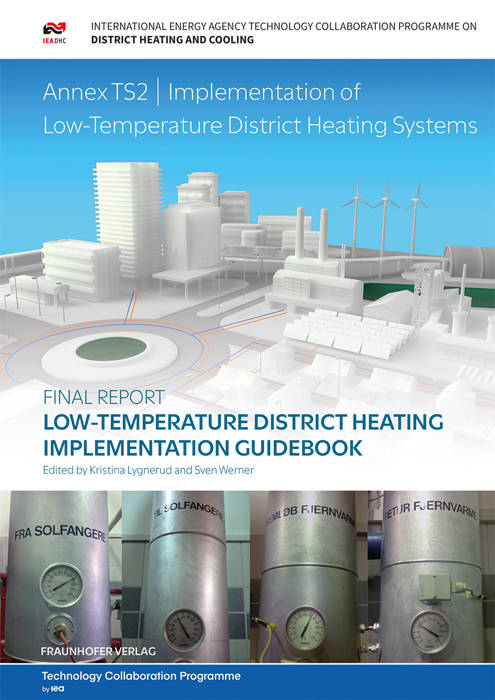
- Retrait gratuit dans votre magasin Club
- 7.000.000 titres dans notre catalogue
- Payer en toute sécurité
- Toujours un magasin près de chez vous
- Retrait gratuit dans votre magasin Club
- 7.000.0000 titres dans notre catalogue
- Payer en toute sécurité
- Toujours un magasin près de chez vous
Low-Temperature District Heating Implementation Guidebook.
Annex TS2 Implementation of Low-Temperature District Heating Systems.
Helge Averfalk, Theofanis Benakopoulus, Isabelle Best, Frank Dammel, Christian Engel, Roman Geyer, Oddgeir Gudmundsson, Johannes Oltmanns, Natasa Nord, Karl Ponweiser, Dietrich Schmidt, Harald Schrammel, Dorte Skaarup Østergaard, Svend Svendsen, Michele Tunzi, Kristina Lygnerud, Sven Werner
Livre broché | Anglais
64,45 €
+ 128 points
Description
Low-Temperature District Heating Implementation Guidebook. This guidebook was written between 2018 and 2021 by seventeen authors within the IEA DHC/CHP TS2 annex. The input came from 250+ literature references and 165 inspiration initiatives to obtain lower temperatures in buildings and heat distribution networks. The author group wrote 40 internal documents about early implementations of low-temperature district heating. Fifteen of these early implementations are presented in this guidebook. The guidebook contains aggregated information about the main economic drivers for low-temperature district heating, how to obtain lower temperatures in heating systems inside existing and new buildings, and how to obtain lower temperatures in existing and new heat distribution networks. An applied study of a campus system in Darmstadt shows the possibility of reducing temperatures in an existing heat distribution network with rather high temperatures. The competitiveness of low-temperature district heating is explored by analysing business models and heat distribution costs. Early adopters of low-temperature district heating are presented by examples and by identified transition strategies. Five groups of network configurations with fourteen variants are presented to be used for low-temperature district heating. Finally, all 165 identified inspiration initiatives and all 137 locations mentioned are listed.
Spécifications
Parties prenantes
- Auteur(s) :
- Editeur:
Contenu
- Nombre de pages :
- 201
- Langue:
- Anglais
Caractéristiques
- EAN:
- 9783839617458
- Format:
- Livre broché
- Dimensions :
- 210 mm x 12 mm
- Poids :
- 860 g

Les avis
Nous publions uniquement les avis qui respectent les conditions requises. Consultez nos conditions pour les avis.






